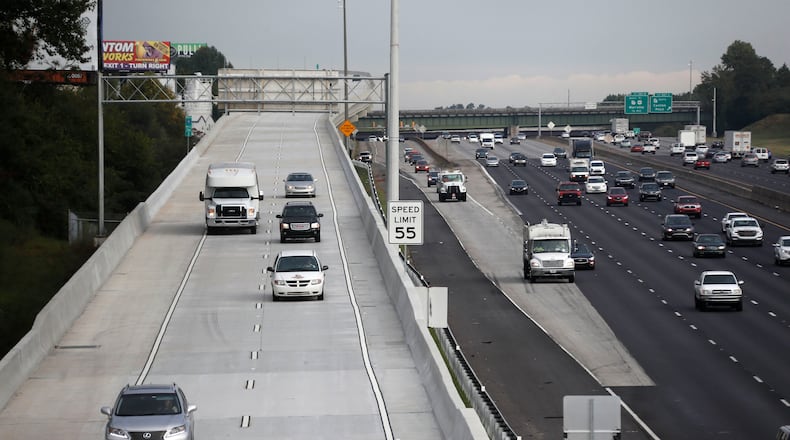The Northwest Corridor Express Lanes have had a big impact on traffic, increasing travel speeds and shrinking rush hour on I-75, according to the Georgia Department of Transportation.
The 30 miles of reversible lanes on I-75 and I-575 in Cobb and Cherokee counties opened last September. In their first eight months, motorists took more than 4.2 million trips on the lanes, GDOT says.
Traffic in the new toll lanes has moved 30 percent faster than traffic in the general purpose (or “free”) lanes, the agency says. But vehicles in the regular lanes also have benefited.
GDOT says the average speed on I-75 northbound from I-285 to I-575 at afternoon rush hour’s peak was 40 mph in April – twice the speed from April 2018, before the new lanes opened. GDOT also says rush hour has been reduced by an hour in the morning and in the afternoon.
The lanes use what GDOT calls “dynamic pricing” – the worse the traffic, the higher the price to use the lanes. The idea is to raise the price enough to discourage some people from using the lanes and keep traffic moving. The average daily fare for traveling the full length of the lanes was $1.70.
GDOT says building more free lanes won't solve Atlanta's traffic problem in the long run, because they soon fill up with traffic.
GDOT's stats are just the latest evidence that the lanes have improved traffic. Anecdotally, some motorists have told The Atlanta Journal-Constitution they've saved up to 45 minutes on their commute. And this month the State Road and Tollway Authority had to adjust the schedules of Xpress buses that use the new lanes because they were arriving at their destinations too early.
The Northwest Corridor lanes are part of metro Atlanta's growing network of toll lanes. Next up: lanes along Ga. 400 in Fulton and Forsyth counties, then along the top half of the Perimeter.
About the Author
The Latest
Featured


